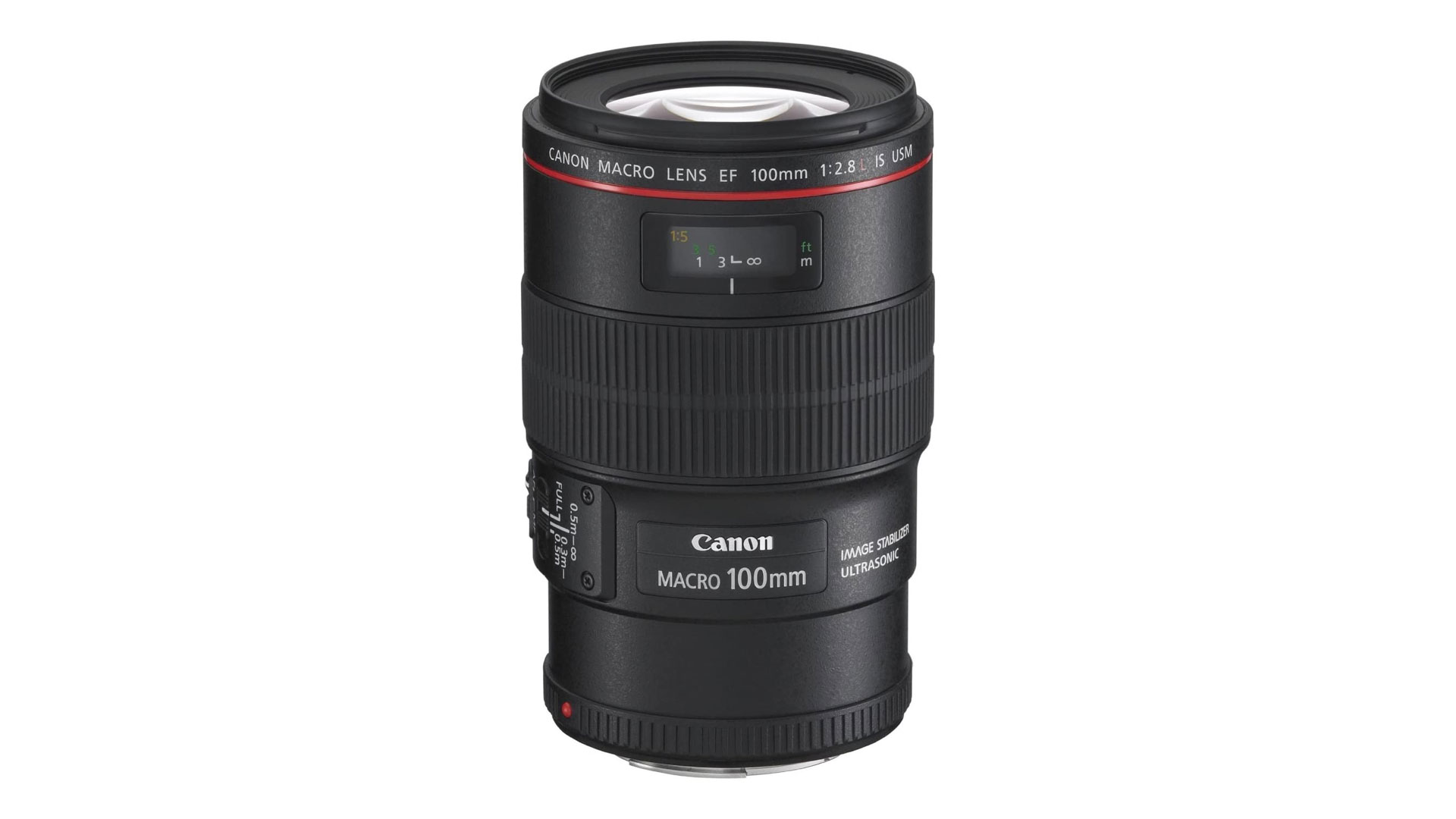The best lenses for the Canon EOS 6D Mark II: great glass for a classic DSLR
Discover the best lenses for the Canon EOS 6D Mark II, my guide tells you all you need to know.

I've always thought that the Canon EOS 6D Mark II was one of the best DSLRs on the market. A major upgrade over the original, it's almost like the best of a DSLR and mirrorless camera in one package. You get a 'proper' optical viewfinder and endless battery life, along with hybrid phase/contrast autofocus right on the image sensor when you're in Live View mode. Handling is excellent and it's great value at the price. But of course, any camera is only as good as the lenses that you mount on it, which is where my guide comes in.
I’ll be focusing on high-quality lenses that produce sharp results to make the most of the camera's 26.2MP full-frame image sensor. Most of the best lenses in my roundup include features like fast, ultrasonic motors for speedy autofocusing, and high-performance optical image stabilization, given that like other Canon EOS DSLRs, there's no in-body sensor-shift stabilization. Some also have fast apertures, offering versatile options for wide-ranging shooting scenarios.
I feel that each lens in the guide has been perfectly crafted for use with this full-frame camera. Most take advantage of features such as flare-reducing lens coatings, ultra low dispersion elements that prevent chromatic aberration, and aspherical elements designed to remove distortion issues.

Jase Parnell-Brookes is an award-winning photographer, educator and writer based in the UK. They won the Gold Prize award in the Nikon Photo Contest 2018/19 and was named Digital Photographer of the Year in 2014. After completing their Masters, Jase has spent a good chunk of two decades studying and working in photography and optics. Now the Channel Editor for Cameras and Skywatching at Space.com, their speciality is in low-light optics and camera systems.
The Quick List

This zoom has a versatile focal length range for daily use, as well as superb sharpness and a quality build. Read more below…

I find that the combination of a wide-angle zoom range and a fast aperture make this lens great for night skies as well as landscapes. Read more below…

With a wide constant aperture and sharp detail wide-open, this is a great option for night skies and epic scenes. Read more below…

This prime deserves its status as a perennial best-seller, with excellent detail and a price tag you won’t believe. Read more below…

This is a great example of a portrait lens, with a wide aperture to isolate your subject and create dreamy bokeh. Read more below…

A favorite telephoto of many Canon photographers, this zoom delivers sharp details aided by image stabilization. Read more below…
View the full list ⤵

Sigma has done a good job here with keeping the weight and size at reasonable levels while keep image quality high. Read more below…

Shoot small objects and creatures from a comfortable distance with this macro, which doubles as a decent portrait lens. Read more below…
Best lenses for the Canon 6D Mark II
Why you can trust Digital Camera World
Best everyday lens for the 6D Mark II
Specifications
Reasons to buy
Reasons to avoid
This standard wide to mid zoom hits all the useful focal lengths a photographer could ask for on a day-by-day basis. There’s great sharpness throughout the zoom range, and a constant f/2.8 aperture keeps images bright even in dark environments. It’s a little heavier than other competitor models, but Sigma has paid close attention to this lens to reduce optical aberrations and minimize distortion.
Sturdy metal construction means it’s strong and durable and there’s even partial weather sealing to protect it from the elements. A Hyper Sonic Motor (HSM) in the lens makes this all-purpose zoom fast and accurate at autofocusing even in tricky situations.
Read more: Sigma 24-70mm f/2.8 DG OS HSM Art review
Best wide-angle zoom for the 6D Mark II
Specifications
Reasons to buy
Reasons to avoid
Touted by Sigma as containing zero distortion, this Art-series lens is truly versatile. With a zoom range of 14-24mm, it lends itself well to landscape photography. However, the fast and constant f/2.8 aperture also suits wide-field astrophotography.
It’s designed to handle chromatic aberration well and shoot with streak-free results when aimed at bright light sources. It’s also compatible with the 6D Mark II’s Lens Aberration Correction function, to further perfect optical characteristics. Native distortion shows up in close-range lab tests but in real-world shooting, I've hardly ever noticed any distortion, even at the short end of the zoom range.
Read more: Sigma 14-24mm f/2.8 DG HSM Art review
Best wide-angle prime for the 6D Mark II
Specifications
Reasons to buy
Reasons to avoid
Sold as the Rokinon SP 14mm f/2.4 in the USA, I find this ultra-wide prime is an ideal choice for interiors and for shooting nightscapes. The f/2.4 aperture is able to cope with fading light, but the lens maintains sharpness across the entire frame when it’s wide-open, which is crucial for astrophotography.
Handling is terrific: the focus ring is rubberized, which really helps with grip when you’re shooting in the cold. It’s a manual-focus-only lens, with no autofocus facility, but that’s less important in a wide-angle like this, where the depth of field stays deep even when the aperture’s at its widest.
Read more: Samyang XP 14mm f/2.4 review
Best standard prime for the 6D Mark II
Specifications
Reasons to buy
Reasons to avoid
This is a classic Canon lens that continues to sell healthily – and it’s no wonder. It’s light and compact, sharpness and detail are strong even in the corners, and the autofocus system is pleasingly responsive. This is all provided at a shockingly low price, which is why this nifty fifty is feted as one of the best lens deals you’ll find.
Read more: Canon EF 50mm f/1.8 STM review
Best portrait lens for the 6D Mark II
Specifications
Reasons to buy
Reasons to avoid
A prime focal length that’s known for its ability to create flattering portraits, the 85mm focal length compresses perspectives just enough to smooth out facial features while the shallow f/1.4 aperture isolates subjects beautifully, creating dreamy background bokeh.
Armed with four stops of image stabilization, this lens steadies handheld shooting, which is especially handy in low light conditions, where photographers are forced to use longer exposures to counteract the lack of light. Air Sphere Coating (ASC) reduces internal ghosting and flare, and an Ultrasonic Motor keeps autofocus fast and accurate.
Read more: Canon EF 85mm f/1.4L IS USM review
Best telephoto lens for the 6D Mark II
Specifications
Reasons to buy
Reasons to avoid
Ever useful, the 70-200mm telephoto zoom range is a standard across all lens manufacturers. It’s suited to a wide range of assignments from portraits to gig photography, and the longer end might have become unwieldy for all but the steadiest hands unless this L-series version came with 3.5 stops of image stabilization.
Flare and ghosting is attenuated on this 70-200mm by the use of a Fluorite coating and Ultra Low Dispersion elements. Fully weather sealed, it's happy being shot in the rain, on a dusty beach, or sitting amongst the snow up the mountain.
Read more: Canon EF 70-200mm f/2.8L IS III USM review
Best super-telephoto lens for the 6D Mark II
Specifications
Reasons to buy
Reasons to avoid
Super-telephotos like this are rarely small, but Sigma has done a good job at keeping this lens just under the 2kg wire. It’s not overly large to handle either, but definitely much larger than many other, more typical telephotos.
Photographers favoring handheld shooting should be aware of the slower maximum aperture of f/6.3 when zoomed in to 600mm, but four stops of Optical Stabilization remedies this somewhat. In order to fit all of that glass inside and keep things sharp and clean, the front element has had to grow to a massive 95mm, so get ready to shell out for some more filters if you opt for this lens. Also consider Sigma's more robust Sport version of this lens, the Sigma 150-600mm f/5-6.3 DG OS HSM | S.
Read more: Sigma 150-600mm f/5-6.3 DG OS HSM | C review
Best macro lens for the 6D Mark II
Specifications
Reasons to buy
Reasons to avoid
The long focal length gives the EF 100mm f/2.8L IS USM macro lens a usable working distance for those who like to photograph bugs and other skittish wildlife, with a minimum focusing distance of 30cm. Image stabilization steadies shooting by up to four stops, which drops to three stops at 0.5x magnification and two stops at 1.0x magnification.
It has the ability to focus to infinity so it can be used as a general telephoto prime lens too. At 100mm it’s ideal for portraiture because when paired with the wide aperture of f/2.8 it can produce shallow depth of field and satisfying subject isolation.
Read more: Canon EF 100mm f/2.8L Macro IS USM review
Lab data and comparisons
The graphs below show the comparative performance of the lenses in this guide, based on our in-house lab tests. Prime lenses in the group tend to lead the way for sharpness, although the Canon 70-200mm does particularly well for a zoom. Color fringing is fairly minimal across the board, while wide-angle lenses show the most barrel distortion.
Scores for sharpness and color fringing are averaged from data taken across the entire image frame, from the center to the edges and corners, throughout the aperture range. For zoom lenses, the scores are also averaged from data measured at all marked focal lengths, and the same applies to distortion. Bear in mind that these average values don't fully reflect specific areas of performance. For example, a zoom lens might have noticeable barrel and pincushion distortion at its shortest and longest focal lengths respectively, which tends to average out when looking at the data overall. For more detailed graphs of each lens's performance, which give the full picture, check out the graphs in our full standalone lens reviews.
How to choose the best lens for the 6D Mark II
Do all Canon lenses fit the 6D Mark II?
The 6D Mark II uses the Canon EF mount, which means it works with all EF lenses. EF lenses are designed for use with full-frame Canon DSLRs such as the 6D series, and there’s a wide selection to choose from.
The 5D Mark II can’t use Canon EF-S lenses, which are made for APS-C Canon DLSRs. These lenses don’t physically fit to the EF lens mount.
The 6D Mark II can’t use Canon RF or EF-M lenses, which are designed for mirrorless Canon cameras.
If you later upgrade to a Canon R-series mirrorless camera, you can continue to use your EF lenses on your new camera if you buy a Canon Mount Adapter EF-EOS R.
How do I know which lens to get for my 6D Mark II?
The reason there are so many types of lens in the first place is that different scenes demand different lens designs, particularly when it comes to focal length and aperture rating.
Usually, you will decide what you want to photograph, then get a lens with the focal length that suits the situation. For example, to shoot landscapes you will need a wide-angle lens, while for sports and wildlife you will need a telephoto.
You can watch this video that explains focal length: it helps you work out what kind of lenses you need for different genres of photography.
How we test lenses
The lens experts in our testing lab run a range of tests under controlled conditions, using the Imatest Master testing suite. Photos of test charts are taken across the range of apertures and zooms (where available), then analyzed for sharpness, distortion and chromatic aberrations.
We use Imatest SFR (spatial frequency response) charts and analysis software to plot lens resolution at the centre of the image frame, corners and mid-point distances, across the range of aperture settings and, with zoom lenses, at four different focal lengths.
There's more to it than just the technical side, though! Beyond the lab, our reviewers test lenses in real-world environments – and sometimes on professional shoots! We work with lenses both indoors and outdoors, in studio conditions and in natural light, with as many different subjects as is possible (or appropriate – there's no point testing a landscape lens' ability to shoot a portrait!).
We take into account everything from handling and ease of use to speed of autofocus and the overall quality of the images produced.
Find out more about how we test and review on Digital Camera World
The best camera deals, reviews, product advice, and unmissable photography news, direct to your inbox!
Jase Parnell-Brookes is an award-winning photographer, educator and writer based in the UK. They won the Gold Prize award in the Nikon Photo Contest 2018/19 and was named Digital Photographer of the Year in 2014. After completing their Masters Jase has spent a good chunk of two decades studying and working in photography and optics shooting and writing all over the world for big-name brands and media outlets. Now the Channel Editor for Cameras and Skywatching at Space.com their speciality is in low light optics and camera systems.








